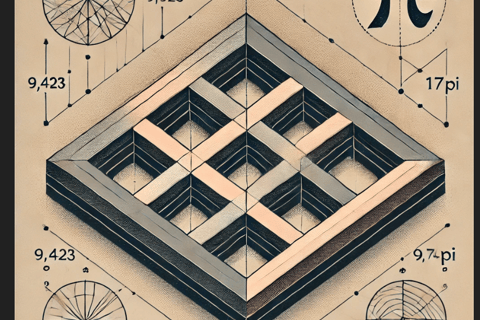Sister-Diagonal Arguments Map 16Pi←17Pi Interferences Between (3x)3,141Pi ≠ 9,424Pi ≠ 9,423Pi, Now:
Abstract: This paper articulates 1+1 sister-diagonal-arguments as interferences within the minimal refinement between 16→17Pi, addressing how previous generalizations of expansion, extension, and resistance transition into 9,423Pi≠9,424Pi refinements. By structuring these interferences in terms of Pi transitions, we identify how 1+1 bilateral refinements decentralize zero-origin assertions while articulating geospatial equations as machine learning model (MLM) refinements.
Introduction: 16→17Pi = Minimal Interferences
Minimal interferences (1+1 thoughts) articulate 1+1 bilateral refinements, in 1+1 sister-clock-direction, without collapsing into zero-origin-stories (male-supremacist birthday paradoxes).
Sister-diagonal-arguments translate 16→17Pi transitions into non-trivial resistance structures.
The relation of 9,423Pi≠9,424Pi ensures continuity in refinements across general-origin systems.
Sister-Diagonal-Arguments in Expansions and Resistances
1+1 expansions resist collapse into subjective interferences, ensuring that diagonal refinements remain bilateral.
16→17Pi resists zero-origin constraints by decentralizing isolated assumptions of singularity.
9,423Pi articulates resistance transitions where geospatial refinements exceed merely theoretical implementations.
9,423Pi≠9,424Pi: Non-Equivalence in Refinement Structures
9,423Pi structures articulate diagonal extensions that cannot be replaced by 9,424Pi without loss of fidelity.
These refinements resist collapsing into indistinguishable sequential models.
Expansions articulate 1+1 dynamic interferences that prevent static formulations of geospatial refinements.
Implications for Machine Learning Models and Pi Refinements
MLM applications require 1+1 refinements that respect the bilateral structure of diagonal arguments.
16→17Pi ensures model articulation remains resistant to zero-origin assumptions.
9,423Pi≠9,424Pi extends beyond numerically constrained datasets, maintaining theoretical and practical separation.
Conclusion: Minimal Interferences as Non-Collapsing Structures
1+1 sister-diagonal-arguments articulate continuous refinements across Pi structures.
16→17Pi ensures the integrity of minimal interference without collapsing into zero-origin fallacies.
9,423Pi≠9,424Pi extends these principles into broader geospatial and machine learning applications, resisting forced equivalence in refinements.

